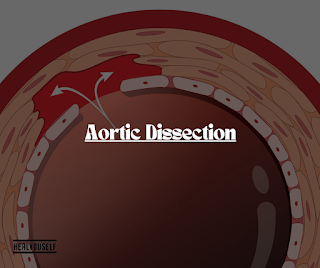Aortic Dissection: Understanding the Silent Killer
Aortic dissection is a life-threatening condition that requires immediate medical attention. It occurs when a tear develops in the inner layer of the aorta, the large blood vessel branching off the heart. This tear allows blood to surge through the tear into the middle layer of the aorta, causing the inner and middle layers to separate (dissect). If the blood-filled channel ruptures through the outside aortic wall, aortic dissection is often fatal.
Causes and Risk Factors
Aortic dissection is more common in men than women and typically affects individuals aged 60 to 70. Several risk factors contribute to the likelihood of experiencing an aortic dissection:
- Hypertension: High blood pressure can damage the aorta’s walls, making them more susceptible to tearing.
- Aortic Aneurysm: An aortic aneurysm, a bulging or dilation of the aorta, can increase the risk of dissection.
- Genetic Conditions: Disorders such as Marfan syndrome, Ehlers-Danlos syndrome, and Turner syndrome can weaken the aorta.
- Connective Tissue Disorders: Conditions that affect connective tissues, which provide structure and support to blood vessels, can also increase the risk.
- Atherosclerosis: Plaque buildup in the arteries can weaken the aorta.
- Trauma: Severe chest injury, such as from a car accident, can lead to aortic dissection.
Symptoms
The symptoms of aortic dissection can mimic those of other conditions, making diagnosis challenging. Common symptoms include:
- Severe Chest Pain: Often described as tearing or ripping, and can radiate to the back.
- Sudden Onset of Pain: The pain typically begins suddenly and is intense.
- Shortness of Breath: Due to the impact on the heart and lungs.
- Syncope: Fainting or loss of consciousness can occur.
- Weak Pulse: A weak pulse in one arm or thigh compared to the other can indicate a problem with blood flow.
- Stroke Symptoms: Including difficulty speaking, paralysis, or weakness on one side of the body if the dissection disrupts blood flow to the brain.
Diagnosis
Prompt diagnosis is crucial for survival. Several imaging tests can help diagnose aortic dissection:
- CT Scan: Provides detailed images of the aorta and can quickly identify a dissection.
- MRI: Offers detailed images without radiation exposure but is less commonly used in emergency settings.
- Transesophageal Echocardiogram (TEE): A probe inserted down the esophagus provides detailed images of the aorta and heart.
- Chest X-ray: Can show a widened aorta, though it is less definitive than other imaging techniques.
Treatment
Treatment for aortic dissection depends on the location and severity of the tear:
- Medications: Blood pressure and heart rate control are essential. Beta-blockers and nitroprusside are commonly used.
- Surgery: Urgent surgery is often required for type A dissections (involving the ascending aorta). The procedure involves removing the damaged section of the aorta and replacing it with a synthetic graft.
- Endovascular Repair: For type B dissections (involving the descending aorta), less invasive procedures may be used. A stent-graft is inserted through a small incision in the groin and guided to the aorta to reinforce the vessel walls.
Prevention and Management
Managing risk factors is crucial to prevent aortic dissection:
- Control Blood Pressure: Regular monitoring and medication adherence are vital.
- Regular Check-ups: For those with genetic conditions or a history of aortic aneurysms, frequent imaging tests can monitor the aorta’s condition.
- Healthy Lifestyle: A balanced diet, regular exercise, and avoiding smoking can reduce the risk of atherosclerosis and hypertension.
- Medications: In some cases, medications may be prescribed to manage conditions that increase dissection risk.
Conclusion
Aortic dissection is a critical medical emergency with high mortality rates if not promptly treated. Understanding the risk factors, recognizing the symptoms, and seeking immediate medical care can significantly improve outcomes. Regular medical check-ups and lifestyle modifications are essential in preventing this silent killer.
Sources
- American Heart Association. (2021). Aortic Dissection. Retrieved from https://www.heart.org/en/health-topics/aortic-aneurysm/aortic-dissection
- Mayo Clinic. (2021). Aortic Dissection. Retrieved from https://www.mayoclinic.org/diseases-conditions/aortic-dissection/symptoms-causes/syc-20369472
- Cleveland Clinic. (2020). Aortic Dissection: Symptoms, Causes, and Treatment. Retrieved from https://my.clevelandclinic.org/health/diseases/16876-aortic-dissection
- National Institute of Health. (2022). Aortic Dissection. Retrieved from https://medlineplus.gov/aorticdissection.html

